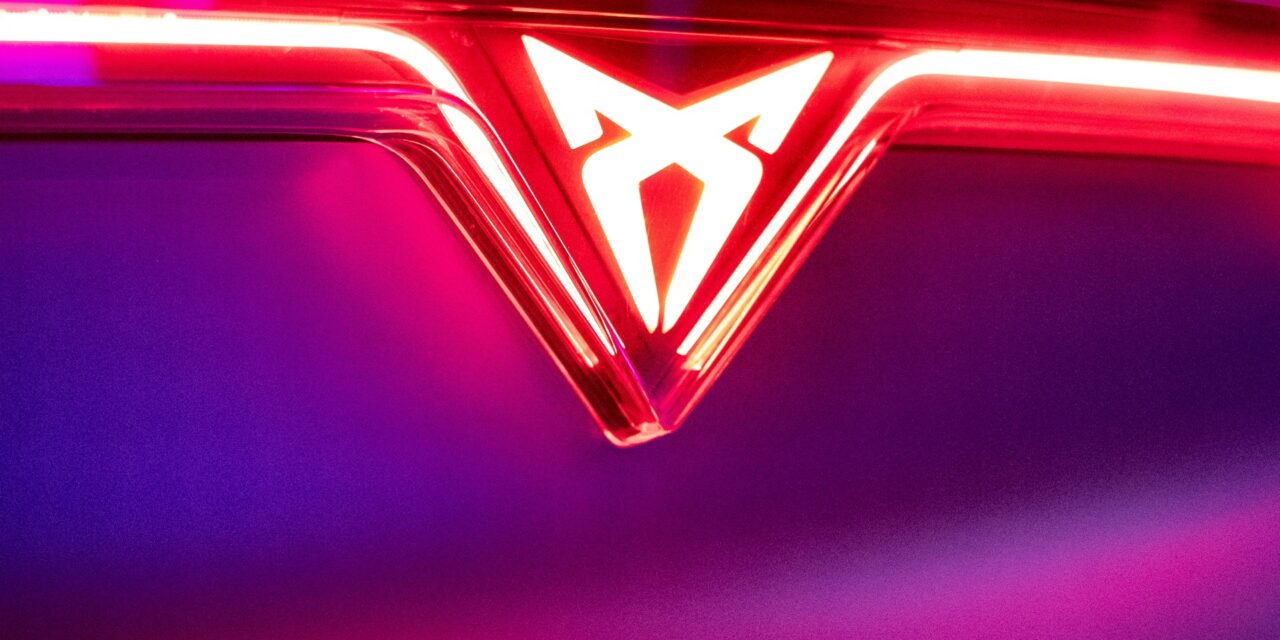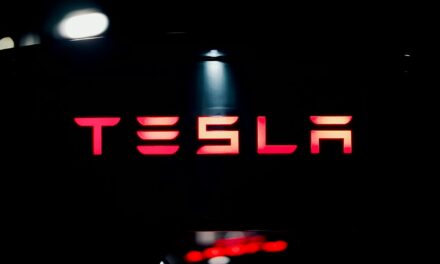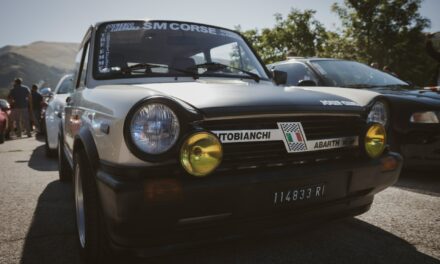- Key Takeaways
- Cupra and Its Parent Company
- Volkswagen Group’s Role in Cupra
- Manufacturing Locations and Facilities
- Martorell Production Plant Overview
- Zona Franca Facility Details
- Global Market Presence of Cupra
- Evolution and History of the Brand
- Motorsport Involvement and Achievements
- Current Model Line-Up and Features
- Summary
- Frequently Asked Questions
Cupra cars are turning heads with their bold design and dynamic performance. But who makes these striking vehicles? The answer lies in the vibrant history of the Spanish automotive industry. Cupra, originally a high-performance division of SEAT, has evolved into its own brand, capturing the spirit of innovation and speed. SEAT, a key player in European car manufacturing since 1950, birthed Cupra to push boundaries and redefine driving experiences. Today, Cupra stands as a symbol of cutting-edge technology and sleek aesthetics. With roots deeply embedded in Spanish craftsmanship, Cupra cars embody a fusion of tradition and modernity. Enthusiasts admire their unique blend of style and substance. Discover more about the creators behind these remarkable machines and how they continue to shape the future of motoring.
Key Takeaways
- Cupra’s Parentage: Cupra is a high-performance brand under the SEAT umbrella, which is part of the Volkswagen Group, showcasing the German conglomerate’s diverse automotive reach.
- Volkswagen’s Influence: The Volkswagen Group plays a crucial role in Cupra’s operations, providing resources and expertise that drive innovation and quality in Cupra’s vehicles.
- Manufacturing Insights: Cupra cars are primarily manufactured in Spain, with key facilities located at the Martorell Production Plant and the Zona Franca Facility, ensuring efficient production and distribution.
- Strategic Production: The Martorell plant is central to Cupra’s manufacturing process, equipped with advanced technology to produce cutting-edge vehicles that meet global standards.
- Global Ambitions: Cupra has successfully expanded its presence in international markets, leveraging its motorsport heritage and innovative designs to attract a global audience.
- Brand Evolution: From its origins as a performance division of SEAT to an independent brand, Cupra has evolved significantly, maintaining strong ties to motorsport which influence its current model line-up.
Cupra and Its Parent Company
SEAT S.A.
SEAT S.A. is the parent company of Cupra. It is a Spanish automobile manufacturer with a rich history. Founded in 1950, SEAT has played a significant role in Spain’s automotive industry. The company was established as a collaboration between the Spanish government, private banks, and Fiat. This partnership aimed to boost Spain’s industrial capabilities post-World War II.
Fiat’s involvement provided technical expertise and resources. This helped SEAT produce its first model, the SEAT 1400, in 1953. Over the years, SEAT expanded its range of vehicles, gaining popularity in Spain and beyond. It became known for producing affordable and reliable cars. The company’s headquarters are located in Martorell, near Barcelona.
Volkswagen Acquisition
In 1986, SEAT underwent a major transition. The Volkswagen Group acquired a majority stake in the company. This acquisition marked SEAT’s transformation into a subsidiary of one of the world’s largest car manufacturers. Volkswagen’s investment brought new technologies and designs to SEAT, enhancing its product lineup.
The acquisition also opened up new markets for SEAT cars across Europe and globally. Under Volkswagen’s ownership, SEAT continued to innovate and expand its offerings. The brand maintained its identity while benefiting from Volkswagen’s vast resources and expertise.
Birth of Cupra
Cupra emerged as a distinct brand under SEAT S.A., focusing on performance-oriented vehicles. Initially, Cupra was a high-performance trim level for SEAT models. In 2018, it became an independent brand within the company. This shift allowed Cupra to explore new design concepts and technologies.
The first standalone Cupra model was the Cupra Ateca, launched in 2018. It combined sporty performance with practicality, appealing to enthusiasts seeking excitement on the road. Since then, Cupra has expanded its lineup with models like the Cupra Formentor and Cupra Leon.
Cupra’s Identity
Cupra is known for blending sportiness with sophistication. Its vehicles feature bold designs and powerful engines. These elements reflect the brand’s commitment to delivering thrilling driving experiences. Cupra’s focus on innovation is evident in its use of hybrid and electric technologies.
The brand aims to appeal to younger audiences who value style and performance. By offering unique features and customisation options, Cupra stands out in a competitive market. Its emphasis on sustainability aligns with global trends towards eco-friendly transportation solutions.
Future Prospects
Cupra continues to evolve under SEAT S.A.’s guidance within the Volkswagen Group framework. The brand plans to expand its portfolio with more electric models in the coming years. This move aligns with Volkswagen’s broader strategy to lead in electric mobility.
Volkswagen Group’s Role in Cupra
SEAT Acquisition
Volkswagen Group acquired SEAT in 1986. This marked a significant milestone for both companies. SEAT, initially a Spanish state-owned car manufacturer, was transformed under Volkswagen’s guidance. The acquisition allowed SEAT to access advanced technology and resources. Volkswagen’s influence paved the way for Cupra as a distinct brand.
The development of Cupra began within SEAT as a performance division. Volkswagen recognised the potential and supported its growth. By 2018, Cupra emerged as an independent brand. This move was part of Volkswagen’s strategy to diversify its portfolio.
Strategic Support
Volkswagen has been instrumental in expanding Cupra’s market reach. They provided strategic support through their global network. This enabled Cupra to enter new markets with ease. The brand quickly gained recognition for its sporty and innovative cars.
Volkswagen’s global presence offered Cupra access to diverse markets. The group utilised its established dealerships and marketing channels. This helped Cupra build a strong customer base worldwide. Cupra benefited from Volkswagen’s extensive market experience.
Technological Advantages
Volkswagen Group has provided significant technological advantages to Cupra. Access to cutting-edge technology has been crucial for Cupra’s success. Volkswagen’s investment in research and development (R&D) has greatly benefited the brand.
Cupra vehicles incorporate advanced features from Volkswagen’s R&D efforts. This includes efficient engines and safety systems. The use of shared platforms and components has enhanced Cupra’s manufacturing efficiency.
Resource Sharing
Resource sharing is another key aspect of Volkswagen’s role in Cupra’s growth. Being part of the Volkswagen Group grants Cupra access to vast resources. This includes supply chains, production facilities, and expertise.
Cupra leverages these resources to produce high-quality vehicles efficiently. The collaboration ensures cost-effective production while maintaining standards. This synergy between Volkswagen and Cupra strengthens their competitive edge.
Manufacturing Locations and Facilities
Martorell Plant
Martorell, a town near Barcelona, hosts the primary production site for Cupra vehicles. The plant belongs to SEAT, a subsidiary of the Volkswagen Group. It plays a crucial role in manufacturing Cupra models. Opened in 1993, this facility covers over 2.8 million square metres. The Martorell plant is renowned for its advanced technology and high production capacity.
The plant produces several Cupra models, including the Cupra Formentor. It employs thousands of workers dedicated to crafting these performance-oriented vehicles. Martorell’s strategic location near major transport links facilitates efficient distribution.
Other Spanish Facilities
Besides Martorell, other facilities in Spain contribute to Cupra production. The SEAT Technical Centre in Martorell supports design and engineering efforts. This centre focuses on innovation and development for Cupra cars.
The SEAT Componentes plant in El Prat de Llobregat produces gearboxes for various Volkswagen Group brands. These components are vital for Cupra vehicles’ performance and efficiency.
Global Production
While Spain remains central to Cupra production, some activities occur outside its borders. The Bratislava plant in Slovakia manufactures certain components for Cupra models. This facility is part of the Volkswagen Group’s extensive network.
The global reach allows for efficient supply chain management and integration of diverse technologies. It ensures that Cupra vehicles benefit from cutting-edge advancements across different regions.
Future Developments
Cupra plans to expand its production capabilities further. The brand aims to introduce electric models as part of its strategy. This initiative aligns with the broader goals of the Volkswagen Group towards sustainability.
Future developments may include new facilities or upgrades to existing ones. These changes will support Cupra’s growth and adaptation to evolving market demands.
Martorell Production Plant Overview
Significance of Martorell
The Martorell production plant is vital to Cupra’s manufacturing operations. Located near Barcelona, Spain, it serves as the central hub for producing Cupra vehicles. This facility began operations in 1993 and has since become one of the most advanced car manufacturing sites in Europe.
Cupra relies heavily on this plant due to its strategic location and infrastructure. The plant’s proximity to key European markets enables efficient distribution. It plays a crucial role in meeting the growing demand for Cupra cars across the continent.
Capacity Details
The Martorell plant boasts impressive production capabilities. It spans over 2.8 million square metres and employs thousands of skilled workers. Annually, the plant produces hundreds of thousands of vehicles, showcasing its significant output potential.
Technological advancements have further enhanced the plant’s capacity. Automation and robotics are integral to its operations, ensuring high precision and efficiency. This allows Cupra to maintain quality while increasing production volumes.
Technological Advancements
Martorell’s commitment to innovation is evident in its use of cutting-edge technology. The facility incorporates Industry 4.0 principles, integrating digital systems with physical production processes. This results in a seamless and efficient manufacturing environment.
Robotic systems handle various tasks such as welding, painting, and assembly. These technologies not only improve accuracy but also reduce production time. The plant’s focus on sustainable practices aligns with modern environmental standards.
Recent Upgrades
Recent investments have led to several upgrades at the Martorell facility. In 2021, significant funds were allocated to enhance its electric vehicle production capabilities. New equipment was installed to support the assembly of hybrid and electric models.
Expansion efforts included constructing additional assembly lines dedicated to electric vehicles. This move reflects Cupra’s commitment to embracing future mobility trends. Further upgrades ensure that Martorell remains at the forefront of automotive manufacturing.
Expansion Initiatives
Expansion initiatives at Martorell aim to increase its overall capacity. Plans include adding new production lines and expanding existing ones. These efforts will enable the plant to produce more vehicles annually.
Investment in workforce development is also part of these initiatives. Training programs equip employees with skills needed for modern manufacturing techniques. This ensures that Martorell continues to deliver high-quality vehicles efficiently.
Zona Franca Facility Details
Historical Importance
The Zona Franca facility in Barcelona holds significant historical importance for SEAT. Established in 1953, this plant was the first production site for SEAT. It marked a new era in Spanish automotive manufacturing. During the 1950s and 60s, it played a crucial role in Spain’s post-war industrialisation. The plant was pivotal in producing some of SEAT’s earliest models. These included the SEAT 600, which became a symbol of economic progress.
Initial Production
The initial production at the Zona Franca facility focused on popularising automobiles among Spanish citizens. The SEAT 1400 was the first model to roll off its assembly line in 1953. This model aimed to provide affordable cars to the masses. By the late 1960s, the factory had expanded its production capacity significantly. This expansion allowed SEAT to introduce more models like the SEAT 1500 and SEAT 850. These vehicles were designed to cater to the growing demands of Spanish families.
Role in Cupra Operations
Today, the Zona Franca facility continues to play an essential role in Cupra’s operations. Although most of SEAT’s manufacturing has moved to Martorell, Zona Franca remains vital for specific tasks. It serves as a key logistics hub and supports various manufacturing processes for Cupra cars. The facility is involved in producing components and parts that are later assembled at other sites. This collaboration ensures that Cupra maintains high-quality standards across its vehicle range.
Technological Advancements
The Zona Franca facility has embraced technological advancements over the years. Automation and modern machinery have been integrated into its operations. These improvements enhance efficiency and precision in manufacturing processes. The plant also focuses on sustainability by implementing eco-friendly practices. Energy-efficient systems and waste reduction initiatives are part of its commitment to environmental responsibility.
Strategic Location
Located near Barcelona’s port, the Zona Franca facility benefits from its strategic location. This proximity facilitates efficient transportation of materials and finished products. It enables seamless export and import activities, supporting Cupra’s global reach. The location also provides access to a skilled workforce, contributing to the plant’s ongoing success.
Global Market Presence of Cupra
Export Strategy
Cupra’s export strategy is ambitious. They aim to establish a strong global presence by expanding into numerous international markets. Currently, Cupra operates in over 75 countries. This extensive reach allows them to tap into diverse customer bases. Their strategy focuses on adapting to local market demands while maintaining their brand identity.
To support this expansion, Cupra has invested in logistics and supply chain improvements. They ensure efficient distribution channels for timely delivery. Partnerships with local dealers enhance their market penetration. These relationships help navigate regional regulations and consumer preferences.
Key Markets
Cupra has a significant foothold in several key international markets. Europe remains a stronghold, with Germany and the UK being primary contributors to sales. The brand’s performance-oriented vehicles resonate well with European consumers. In 2022, Cupra reported increased sales in these regions, indicating growing popularity.
In Asia, Cupra has targeted markets like China and Japan. These countries offer vast potential due to their large automotive sectors. In China, they have partnered with local firms to enhance their market entry strategy. Japan also presents opportunities due to its tech-savvy consumer base.
The Americas are another focus area for Cupra. The United States and Mexico are pivotal markets for growth. In the US, Cupra aims to capture enthusiasts who value sporty designs and performance. Mexico serves as a strategic location for manufacturing and distribution across Latin America.
Recent Expansions
Recent expansions highlight Cupra’s commitment to increasing its global footprint. In 2023, they announced plans to enter the Indian market. India offers a burgeoning middle class with rising disposable incomes. Cupra aims to introduce models that cater to Indian tastes and preferences.
Another recent expansion includes South Korea, where they launched new models in 2023. South Korea’s advanced technology infrastructure aligns with Cupra’s innovation-driven approach. This launch marks an important step in establishing a presence in East Asia.
Cupra’s move into Australia is also noteworthy. They began operations there in late 2022, targeting urban centres like Sydney and Melbourne. The Australian market appreciates performance cars, which aligns with Cupra’s offerings.
Evolution and History of the Brand
Origins of Cupra
Cupra began as a performance division within SEAT, a Spanish automobile manufacturer. Founded in 1985, SEAT Sport was the precursor to Cupra. This division initially focused on motorsport and performance enhancements for SEAT vehicles. The name “Cupra” is derived from combining “Cup” and “Racing,” reflecting its racing pedigree. By the 1990s, Cupra models gained popularity among enthusiasts seeking high-performance versions of standard SEAT cars.
Key Milestones
In 2018, Cupra became an independent brand, marking a significant milestone in its history. This transition allowed Cupra to establish its own identity separate from SEAT. The first model released under the new brand was the Cupra Ateca, a compact SUV. This launch signalled Cupra’s ambition to expand its market presence beyond traditional performance vehicles.
Another pivotal moment came in 2020 with the introduction of the Cupra Formentor. It was the first model exclusively designed for Cupra, showcasing unique styling and advanced technology. The Formentor’s release underscored Cupra’s commitment to innovation and design excellence.
Branding Changes
Over time, Cupra underwent several branding changes to strengthen its market position. Initially associated closely with SEAT, it gradually developed a distinct brand image. The introduction of a new logo in 2018 marked a departure from SEAT’s visual identity. This logo features a tribal-inspired symbol, conveying strength and dynamism.
The branding shift also involved redefining Cupra’s target audience. While maintaining its appeal to performance enthusiasts, Cupra aimed to attract a broader customer base interested in premium and sporty vehicles. Marketing campaigns emphasised sophistication and exclusivity, aligning with modern automotive trends.
Market Positioning
Cupra’s market positioning evolved significantly since becoming an independent brand. Initially focused on Europe, it expanded into global markets like Asia and Latin America. This expansion strategy aimed to capitalise on growing demand for sporty SUVs and electric vehicles worldwide.
The brand also embraced sustainability by introducing hybrid and electric models. The launch of the Cupra Born in 2021 marked its entry into the electric vehicle segment. This move aligned with industry trends towards eco-friendly mobility solutions.
Motorsport Involvement and Achievements
Cupra’s Participation
Cupra has a rich history in motorsport. They have been involved in various racing events worldwide. Their participation began with the World Touring Car Championship (WTCC). Cupra entered this competition in the early 2000s. They quickly became a formidable competitor.
Cupra also participates in the TCR series. This series is known for its touring car races. It allows manufacturers to showcase their vehicles’ performance. Cupra uses these platforms to test new technologies and designs.
Notable Victories
Cupra has achieved several notable victories over the years. In 2008, they won the WTCC Manufacturer’s title. This victory marked a significant milestone for the brand. It demonstrated their capability in competitive racing environments.
In recent years, Cupra won multiple titles in the TCR Europe series. These successes highlight their continuous improvement and dedication to excellence. Such achievements enhance their reputation in the motorsport community.
Influence on Design
Motorsport involvement significantly influences Cupra’s vehicle design. Racing provides valuable insights into performance and efficiency. These insights are applied to their production models.
The development of aerodynamics is one example. Racing demands optimal aerodynamic efficiency for better speed and handling. Cupra incorporates these elements into their road cars, improving both performance and fuel efficiency.
Technological Advancements
Technological advancements from motorsport are integrated into Cupra vehicles. Racing environments push technological boundaries. This leads to innovations that benefit everyday drivers.
For instance, braking systems used in racing are adapted for road use. These systems offer enhanced safety and control. Lightweight materials developed for racing reduce overall vehicle weight, improving fuel economy.
Real-Life Examples
Real-life examples demonstrate Cupra’s commitment to innovation through motorsport. The Cupra Formentor is a prime example. It features advanced technology derived from racing experiences.
This model includes dynamic chassis control, enhancing ride comfort and stability. Such features show how Cupra translates racing success into consumer benefits.
Current Model Line-Up and Features
Cupra Formentor
The Cupra Formentor is a standout model in the current line-up. It combines sporty design with practicality. The Formentor’s sharp lines and dynamic stance make it visually appealing. It offers several engine options, including a plug-in hybrid variant. This model provides a balance between performance and efficiency.
Cupra Leon
The Cupra Leon is a hatchback that delivers high performance. It’s available in both petrol and hybrid versions. The Leon features advanced technology, such as adaptive cruise control and digital cockpit. Its sporty suspension ensures a smooth yet exciting drive. The interior is spacious, providing comfort for all passengers.
Cupra Ateca
Cupra Ateca is an SUV known for its power and agility. It comes with a 2.0-litre turbocharged engine, providing impressive acceleration. The Ateca includes all-wheel drive for enhanced grip on various terrains. Its infotainment system is user-friendly, featuring a large touchscreen display.
Unique Features
Cupra models are renowned for their unique features. They often include cutting-edge technology like wireless smartphone integration and voice command systems. Many models have sport seats with lumbar support, ensuring driver comfort during long journeys. The exterior designs are bold, reflecting the brand’s sporty heritage.
Upcoming Releases
Cupra frequently updates its model line-up to stay competitive. An anticipated release is the Cupra Tavascan, expected in 2024. This electric SUV promises innovative features and sustainable driving solutions. Updates to existing models often include enhanced tech features and improved fuel efficiency.
Summary
Cupra stands tall as a dynamic brand under the Volkswagen Group umbrella, blending innovation with motorsport prowess. With production hubs in Martorell and Zona Franca, Cupra cars are crafted with precision and passion, ensuring top-notch quality for enthusiasts like you. The brand’s evolution from a sporty offshoot to a standalone entity reflects its commitment to performance and design excellence.
Explore the current model line-up, where advanced features meet cutting-edge technology. Cupra’s global market presence and rich history in motorsports showcase its relentless pursuit of speed and style. Dive deeper into what makes Cupra unique, and consider experiencing the thrill of driving one yourself. Stay ahead of the curve; join the Cupra community today. Your journey into a world of exhilarating performance awaits. Get behind the wheel and feel the difference.
Frequently Asked Questions
Who makes Cupra cars?
Cupra cars are made by SEAT, a subsidiary of the Volkswagen Group. The brand was established to produce high-performance vehicles.
What role does the Volkswagen Group play in Cupra?
The Volkswagen Group owns SEAT, which manufactures Cupra cars. They provide financial backing and technological support, ensuring high standards and innovation.
Where are Cupra cars manufactured?
Cupra cars are primarily manufactured at the Martorell Production Plant in Spain. Additional facilities include the Zona Franca plant.
What is special about the Martorell Production Plant?
The Martorell Production Plant is known for its advanced technology and efficient production lines. It plays a key role in producing Cupra’s innovative models.
How has the Cupra brand evolved over time?
Cupra began as a performance division of SEAT but evolved into an independent brand in 2018. It now focuses on sporty, high-performance vehicles.
Does Cupra have a presence in motorsport?
Yes, Cupra is actively involved in motorsport. The brand has achieved significant success in various racing events, enhancing its reputation for performance.
What models are currently available from Cupra?
Cupra offers a range of models, including the Formentor, Leon, and Ateca. These models are known for their sporty design and advanced features.





